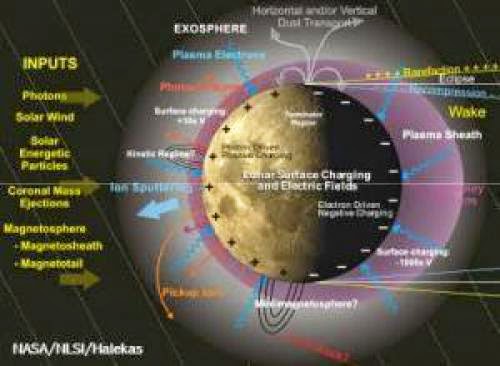
NASA's LRO orbiting the moon
NASA'S LRO conducted the remote sensing observations complimenting the first evidence gathered indicating helium on the moon. The data were in-situ measurements taken by the Lunar Atmospheric Composition Experiment (LACE) by the "APOLLO 17", the last human mission to the lunar surface in 1972.
The lunar scientists (selenologists) gained the ultraviolet emissions visible in the tenuous atmosphere above the lunar surface, detecting helium over a campaign spanning more than 50 orbits of the LRO.
"THE QUESTION NOW BECOMES, DOES THE HELIUM ORIGINATE FROM INSIDE THE MOON, FOR EXAMPLE, DUE TO RADIOACTIVE DECAY IN ROCKS, OR FROM AN EXTERIOR SOURCE, SUCH AS THE SOLAR WIND?" says Dr. Alan Stern, LAMP principal investigator and associate vice president of the Space Science and Engineering Division at Southwest Research Institute, Boulder, Colo.
"IF WE FIND THE SOLAR WIND IS RESPONSIBLE, THAT WILL TEACH US A LOT ABOUT HOW THE SAME PROCESS WORKS IN OTHER AIRLESS BODIES," says Stern.
If spacecraft observations show no such correlation, radioactive decay or other internal lunar processes could be producing helium that diffuses from the interior or that is released during lunar quakes.
NASA's LADEE in 2013
The next US moon mission, the" LUNAR ATMOSPHERE AND DUST ENVIRONMENT EXPLORER" (LADEE), is set for launch from Wallops Island, Virginia in THE SUMMER OF 2013 on a planned 100-day mission in lunar orbit. Orbital Sciences Corp. will utlize the Minotaur V launch vehicle to lift LADEE into space and carry two major scientific experiments to provide better understand of lunar dust in the moon's atmosphere.
THE LUNAR DUST EXPERIMENT (LDEX) instrument led by Mihaly Horanyi at the Laboratory for Atmospheric and Space Physics, University of Colorado, Boulder, Colo. and the UltraViolet Spectrometer (UVS), led by Tony Colaprete at NASA Ames, will provide scientists with more extensive lunar atmospheric analysis.
The instruments will detect and constrain the abundances of species expected to be prevalent at the 50 km altitude, due to the solar wind and its interactions with the surface, release from regolith, and radiogenic sources. The NMS is a quadrupole mass spectrometer designed ot detect species up to 150 amu and will look for CH4, S, O, Si, Kr, Xe, Fe, Al, Ti, Mg, OH, and H2O. The UV/Vis will detect Al, Ca, Fe, K, Li, Na, Si, T, Ba, Mg, H2O, and O and will monitor the dust composition.











0 comments:
Post a Comment